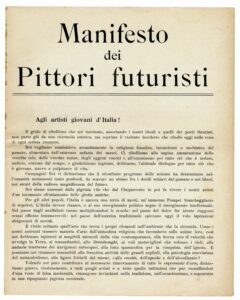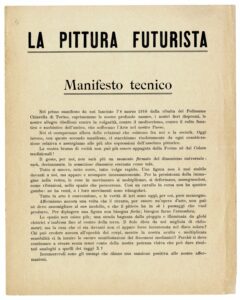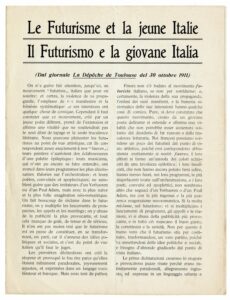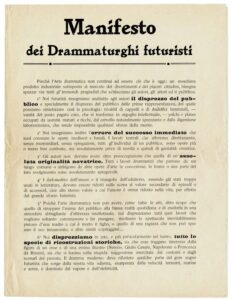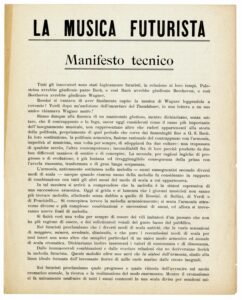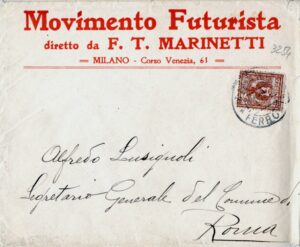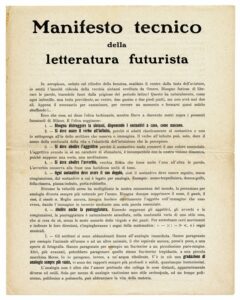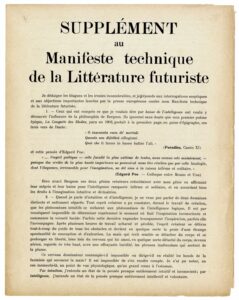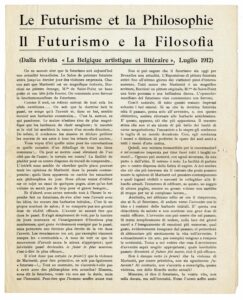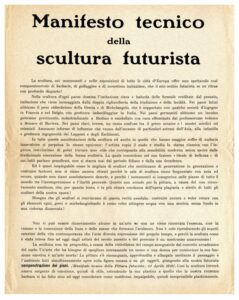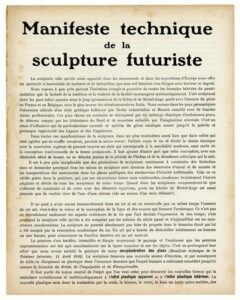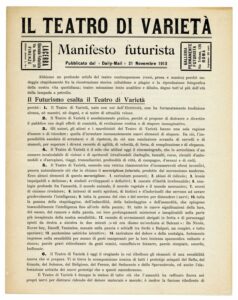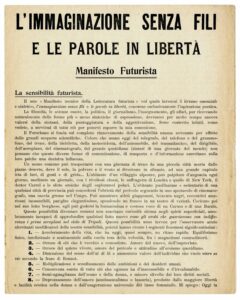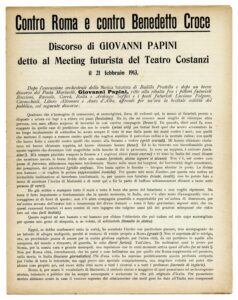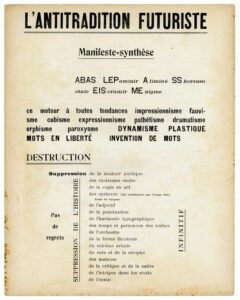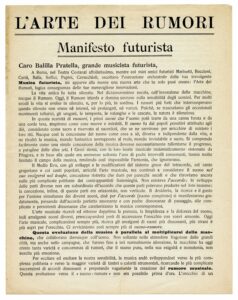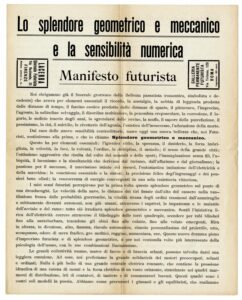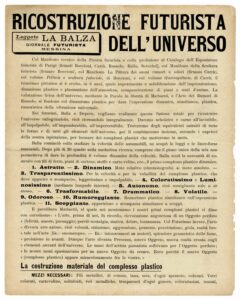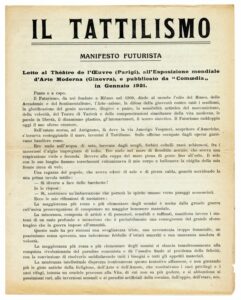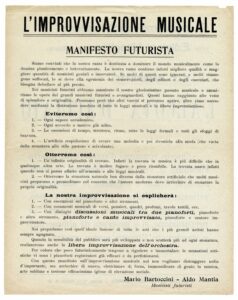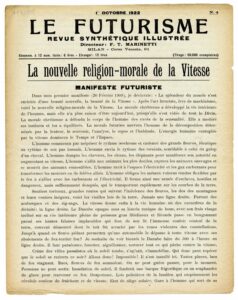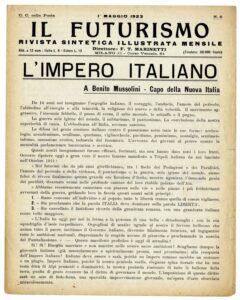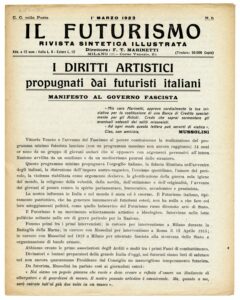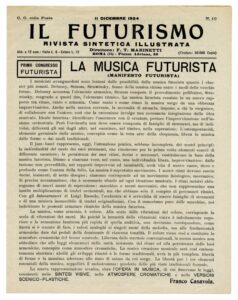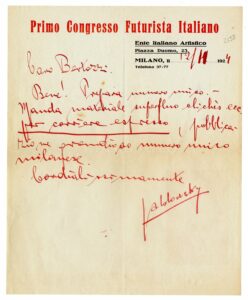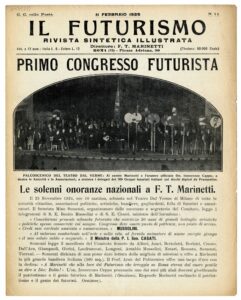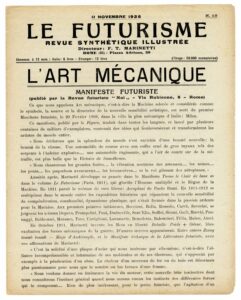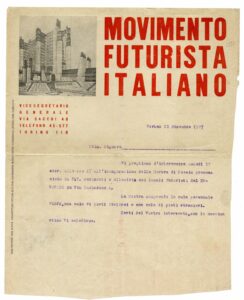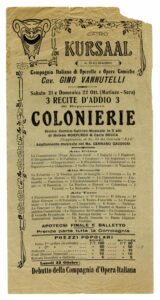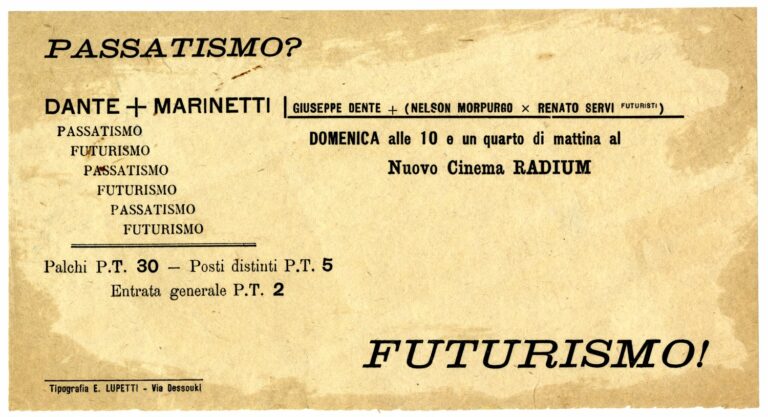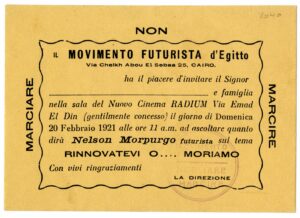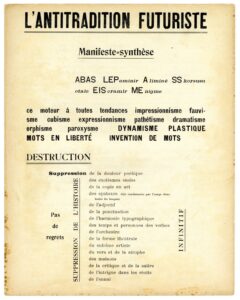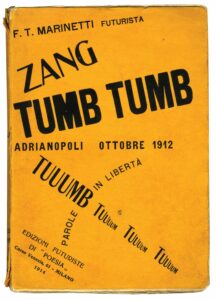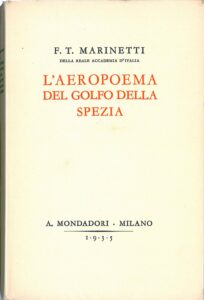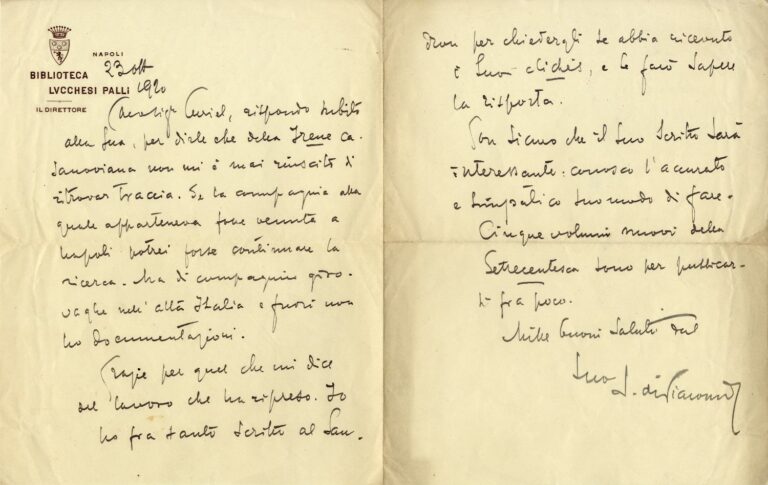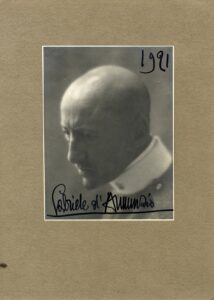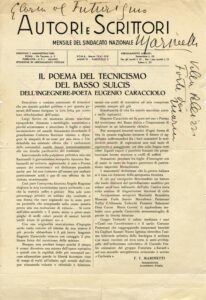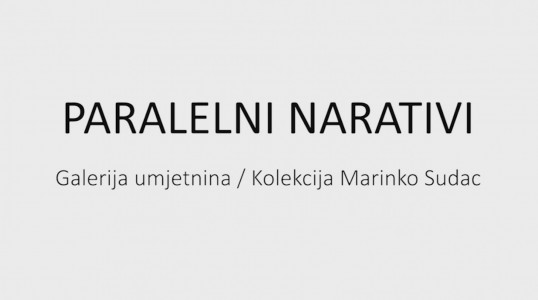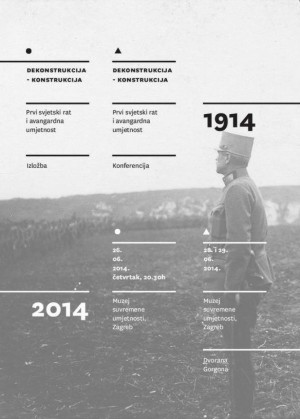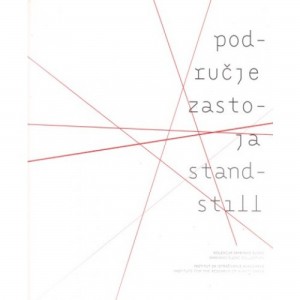FUTURISMO
1909. – 1944., Italija
RADOVI
Biografija
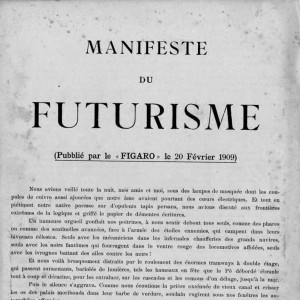
Italija
1915-1946
Talijanski pjesnik Filippo Tommaso Marinetti napisao je manifest nove umjetničke filozofije u svom Manifestu futurizma (1909.), prvi put objavljenom u Milanu, a kasnije 20. veljače u francuskom listu Le Figaro. Marinetti je u njemu sažeo glavne principe futurizma, uključujući i strastveno preziranje ideja iz prošlosti, posebice političke i umjetničke tradicije. On i drugi futuristi prihvatili su ljubav prema brzini, tehnologiji i nasilju. Automobili, avioni, industrijski gradovi, futuristima su bile zahvalne umjetničke teme jer su predstavljale tehnološki trijumf čovjeka nad prirodom. Objavljivanje manifesta značajka je futurizma, i futuristi (obično na Marinettijev poticaj) pisali su ih o mnogim temama, uključujući slikarstvo, arhitekturu, muziku, filozofiju, religiju, pa čak odjeću i kuhanje.
Poznati talijanski umjetnici koji su podržali futurizam bili su Umberto Boccioni, Carlo Carrà, Luigi Russolo, Giacomo Balla i Gino Severini.
Mnogi talijanski futuristi instinktivno su podržavali jačanje fašizma u Italiji, smatrajući ga dobrim za modernizaciju društva i gospodarstva zemlje koja je još uvijek bila rastrgana između neuspjeha industrijske revolucije na Sjeveru i ruralnog, arhaičnog života na Jugu. Marinetti je početkom 1918. godine osnovao Partito Politico Futurista (Futurističku političku stranku), koju je samo godinu dana kasnije Benito Mussolini apsorbirao u Fasci di combattimento, što je Marinettija učinilo jednim od prvih pristaša i pripadnika Nacionalne fašističke stranke. Međutim, neki ljevičari koji su futurizmu pristupili ranijih godina nastavili su se opirati dominacija umjetničkog i političkog smjera kojeg mu je nametnuo Marinetti.
Futurizam je utjecao na mnoge umjetničke pokrete 20. stoljeća, uključujući i Art Deco, Vorticisam, konstruktivizam, nadrealizam i Dadu. Futurizam sa smatra izumrlim kao koherentan i organizirani umjetnički pokret nakon što je u 1944. godini umro njegov vođa Marinetti. Ipak ideali futurizma ostali su značajne komponente moderne zapadne kulture, u naglasku na mladost, brzinu, snagu i tehnologiju koje su temeljne teme modernih komercijalnih filma i kulture.
Futuristički manifest, kojeg je napisao talijanski pjesnik Filippo Tommaso Marinetti, objavljen je na francuskom jeziku u novinama Le Figaro, 20. veljače 1909. godine, kao “Manifeste du futurisme“. Manifest je pokrenuo umjetnički pokret futurizam koji je odbacivao prošlost, slavio brzinu, strojeve, nasilje, mladost i industriju, te tražio modernizaciju i pomlađivanje kulture općenito, a kulture u Italiji posebno. Manifest je razjasnio stajalište o kulturnoj evoluciji kao području intelektualne avangarde. Manifest i manifesti koji su ga slijedili nadahnuli su i izvršili presudan utjecaj na avangardne pokrete među mladim umjetnicima svoje generacije koji su težili novoj civilizaciji i kulturi sukladnim postojećem znanstvenom i industrijskom napretku.
Futuristi su zastupali radikalno odstupanje od tradicionalne umjetnosti, građanske kulture i društva stoga su djelovali u svim područjima i disciplinama umjetničkog djelovanja. Sredstvo njihovog djelovanja bio je politički eksces u smislu šokiranja i provokacije građanskog društva, a najdraži medij novine ili tiskani pamfleti koji su lako dopirali do velikog broja čitatelja. Politički eksces inauguriran kao umjetnički postupak dokidao je ideju autonomnosti umjetnosti u korist njene aktivne političke uloge u destruiranju buržujske kulture i modernističke umjetnosti.
Futuristički manifesti izvršili su utjecaj na urednike i umjetnike povezane s časopisima Zenit, Tank, Dada Tank, MA i Ut. Uz Filippa Tommasa Marinettija (1876. – 1944.) najpoznatiji autori futurističkih manifesta su Francesco Balilla Pratella (1880. – 1955.) Manifest futurističkih muzičara (1910), Luigi Russolo (1885. – 1947.) Umjetnost buke (L’arte dei Rumori, 1913.) I Antonio Sant’Elia (1888. – 1916.) Manifest futurističke arhitekture (Manifesto dell’Architettura Futurista,1914). Marinetti je 1919. g. boravio u Rijeci u vrijeme kad je gradom upravljao pjesnik Gabriele D’Annunzio.



